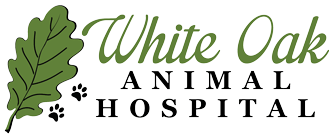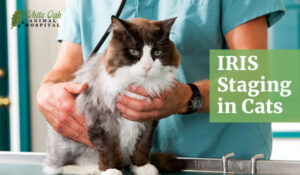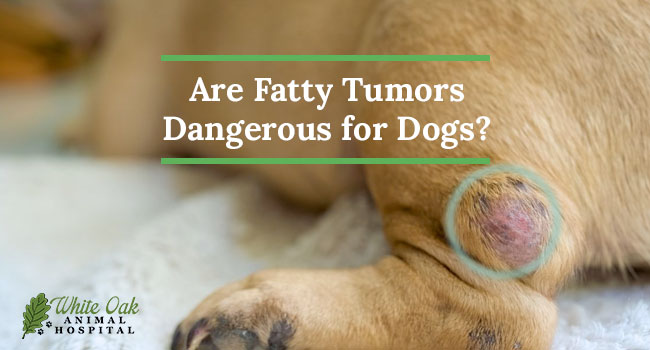
Fatty tumors, also known as lipomas, are common in older dogs. These growths are usually benign and composed of fatty tissue. While they can appear harmless, it’s important to understand whether fatty tumors are dangerous for dogs. Assessing the risks associated with fatty tumors helps pet owners make informed decisions about their dog’s health and care.
What Are Fatty Tumors in Dogs?
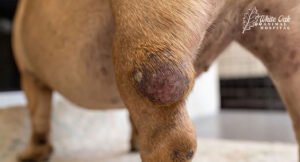 Fatty tumors in dogs develop when fat cells accumulate under the skin, forming a lump or mass. Commonly referred to as lipomas, these tumors are typically benign and do not spread to other parts of the body. Fatty tumors in dogs are often found on the chest, abdomen, and legs. While these growths are generally slow-growing and painless, pet owners need to monitor them regularly.
Fatty tumors in dogs develop when fat cells accumulate under the skin, forming a lump or mass. Commonly referred to as lipomas, these tumors are typically benign and do not spread to other parts of the body. Fatty tumors in dogs are often found on the chest, abdomen, and legs. While these growths are generally slow-growing and painless, pet owners need to monitor them regularly.
Certain breeds, like Labradors, Dobermans, and Miniature Schnauzers, are more susceptible to developing fatty tumors in dogs due to genetic factors. Age, obesity, and genetics are key risk factors in the formation of lipomas, making older and overweight dogs particularly vulnerable. Knowing these risk factors can help pet owners better manage the occurrence of fatty tumors in dogs.
Are Fatty Tumors Dangerous for Dogs?
Most fatty tumors in dogs are benign and pose minimal health risks. However, the safety of fatty tumors in dogs depends on several factors, including their size, growth rate, and location. Regular monitoring is essential to ensure that these growths do not become problematic. While most fatty tumors in dogs are not dangerous, there are situations where they may signal underlying health concerns or cause complications, particularly if they grow large or interfere with a dog’s mobility or organ function.
5 Hidden Risks of Fatty Tumors
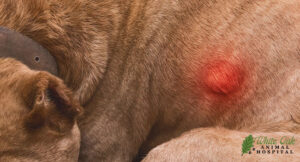 Misdiagnosis of Malignant Tumors
Misdiagnosis of Malignant Tumors
One risk associated with fatty tumors in dogs is the potential for misdiagnosis. While most lipomas are benign, they can sometimes be mistaken for malignant tumors like liposarcomas. This similarity highlights the importance of consulting a veterinarian for proper diagnosis. Misdiagnosis can delay necessary treatment, making it essential to understand whether fatty tumors in dogs could be dangerous.
Tumor Growth and Discomfort
Fatty tumors in dogs can sometimes grow to a significant size, causing discomfort and impacting mobility. If a tumor is located near a joint or in an area that causes friction, it can hinder a dog’s ability to move comfortably. In such cases, fatty tumors in dogs can indeed become dangerous, affecting the pet’s quality of life.
Pressure on Internal Organs
Large fatty tumors in dogs can exert pressure on internal organs, especially if they develop in the abdomen or chest. This pressure can lead to complications such as breathing difficulties or digestive issues. When fatty tumors in dogs affect internal organs, they are more than just a cosmetic concern and can be dangerous, requiring medical attention.
Infection Risk
If fatty tumors in dogs ulcerate or become injured, they pose a risk of infection. This can happen if the tumor is in a location prone to rubbing or trauma. An infected lipoma can cause pain and other complications, making it vital to monitor for signs of infection. In these instances, fatty tumors in dogs can present significant health risks.
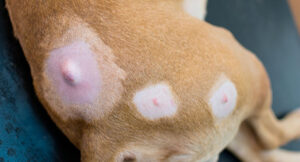 Multiple Tumor Formation
Multiple Tumor Formation
Some dogs may develop multiple fatty tumors, leading to additional health concerns. While a few small lipomas might not be worrisome, multiple large tumors can impact a dog’s comfort and mobility. Understanding if fatty tumors in dogs are dangerous involves recognizing the cumulative effect of multiple growths on a dog’s overall well-being.
When to Be Concerned About Fatty Tumors in Dogs
Certain changes in fatty tumors in dogs should prompt immediate veterinary attention. Rapid growth, changes in texture or color, or ulceration are warning signs that need to be addressed promptly. If a fatty tumor becomes hard, fixed, or the skin over it turns red or irritated, consulting a veterinarian is crucial. These changes could indicate that what was initially a benign lipoma has become dangerous for the dog.
Diagnostic Methods for Fatty Tumors in Dogs
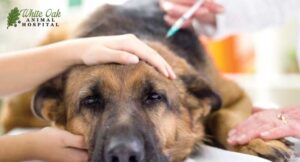 Veterinary evaluation is key in determining whether fatty tumors in dogs are dangerous. Fine Needle Aspiration (FNA) is a common procedure where a thin needle is inserted into the tumor to collect cells for examination. This test helps confirm if a fatty tumor is benign or poses a risk to the dog. If FNA results are inconclusive, further diagnostic methods like biopsies and imaging techniques (such as ultrasound or MRI) may be necessary. These tools provide a clearer picture of the tumor’s size and location, which is vital for understanding if fatty tumors in dogs are dangerous and for planning appropriate treatment.
Veterinary evaluation is key in determining whether fatty tumors in dogs are dangerous. Fine Needle Aspiration (FNA) is a common procedure where a thin needle is inserted into the tumor to collect cells for examination. This test helps confirm if a fatty tumor is benign or poses a risk to the dog. If FNA results are inconclusive, further diagnostic methods like biopsies and imaging techniques (such as ultrasound or MRI) may be necessary. These tools provide a clearer picture of the tumor’s size and location, which is vital for understanding if fatty tumors in dogs are dangerous and for planning appropriate treatment.
Treatment Options for Fatty Tumors in Dogs
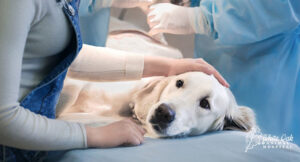 Surgical Removal is often recommended when fatty tumors in dogs grow large, cause discomfort, or have the potential to be malignant. Factors such as the dog’s age, overall health, and tumor location influence the decision to opt for surgery. In some cases, removing a fatty tumor can prevent it from becoming dangerous, especially if it affects the dog’s quality of life. Not all fatty tumors in dogs require surgery, however.
Surgical Removal is often recommended when fatty tumors in dogs grow large, cause discomfort, or have the potential to be malignant. Factors such as the dog’s age, overall health, and tumor location influence the decision to opt for surgery. In some cases, removing a fatty tumor can prevent it from becoming dangerous, especially if it affects the dog’s quality of life. Not all fatty tumors in dogs require surgery, however.
Non-Surgical Options include monitoring the tumor’s size and behavior and using holistic approaches such as weight management and natural supplements. Integrative treatments, like those offered at White Oak Animal Hospital—including acupuncture and herbal therapies—provide alternative options for managing fatty tumors in dogs. These methods help ensure that fatty tumors in dogs remain benign and do not become a health risk.
Prevention and Management of Fatty Tumors in Dogs
Maintaining a healthy weight is crucial in preventing fatty tumors in dogs. Obesity significantly increases the risk of lipomas, so feeding a balanced diet can reduce the likelihood of these tumors developing. Weight management not only helps prevent fatty tumors in dogs but also minimizes the chance of them becoming dangerous if they do occur. Regular veterinary checkups are essential for early detection and management of fatty tumors in dogs. White Oak Animal Hospital emphasizes preventive care to monitor any changes in a dog’s health. By catching issues early, pet owners can prevent fatty tumors in dogs from becoming dangerous, ensuring a healthier and happier pet.
 While most fatty tumors in dogs are benign, they can sometimes pose health risks if left unchecked. Regular monitoring and understanding the potential dangers are key to managing these growths effectively. Pet owners should remain vigilant and seek veterinary care if any changes occur in their dog’s fatty tumors. White Oak Animal Hospital offers comprehensive care, including unique integrative treatment options like TCVM Telemedicine consultations. With over 28 years of experience, our team is well-equipped to provide the best possible care for your pet’s health. Schedule a consultation today to learn more about how we can help manage your pet’s fatty tumors and ensure their well-being.
While most fatty tumors in dogs are benign, they can sometimes pose health risks if left unchecked. Regular monitoring and understanding the potential dangers are key to managing these growths effectively. Pet owners should remain vigilant and seek veterinary care if any changes occur in their dog’s fatty tumors. White Oak Animal Hospital offers comprehensive care, including unique integrative treatment options like TCVM Telemedicine consultations. With over 28 years of experience, our team is well-equipped to provide the best possible care for your pet’s health. Schedule a consultation today to learn more about how we can help manage your pet’s fatty tumors and ensure their well-being.
Frequently Asked Questions (FAQs)
How can I tell if a lump on my dog is a fatty tumor?
Fatty tumors, or lipomas, are generally soft, round, and movable under the skin. They are most commonly found on a dog’s chest, abdomen, or legs. However, only a veterinarian can confirm whether a lump is a fatty tumor. At White Oak Animal Hospital, we use diagnostic tools such as Fine Needle Aspiration to ensure accurate identification and rule out malignancy. Regular checkups are vital for monitoring any new or existing lumps.
Do fatty tumors hurt my dog?
Most fatty tumors are painless and do not cause discomfort. However, if a lipoma grows large or is located in an area where it rubs against other tissues, it can cause discomfort or even pain. This is particularly true if the tumor affects mobility or presses on internal organs. Monitoring the tumor’s size and behavior is crucial to prevent it from becoming dangerous for dogs.
Should all fatty tumors be removed?
Not all fatty tumors need to be removed. The decision depends on factors such as the tumor’s size, growth rate, and location. If a fatty tumor is causing discomfort or has the potential to become dangerous, surgical removal may be recommended. At White Oak Animal Hospital, we assess each case individually, considering the dog’s overall health and the specific characteristics of the tumor to determine the best course of action.
Related Posts
-
How Melatonin for Dogs Promotes Relaxation
Just like people, dogs experience stress for a number of reasons. Some dogs feel nervous…
-
Why Try Food Therapy For Dogs?
Have you heard of food therapy for dogs? PET | TAO, a premium holistic pet…
-
How To Comfort Dogs in Pain With Natural Herbs
Natural herbs are found to be safe and effective to comfort dogs in pain. What’s…
-
3 Reasons Chamomile Benefits Dogs With Anxiety
How Chamomile Benefits Dogs With Anxiety Did you know chamomile benefits dogs suffering from anxiety?…
